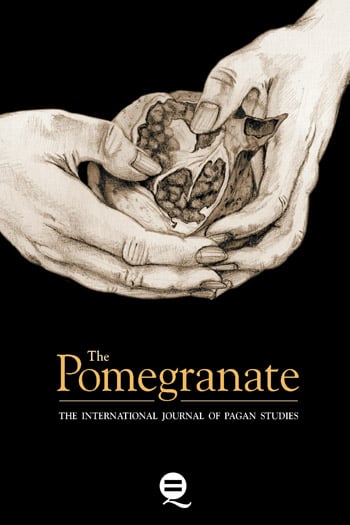Elements of Magic, Esotericism, and Religion in Shaktism and Tantrism in Light of the Shakti Pitha Kamakhya
Keywords:
Assam, Chamunda, Devi, Goddess, India, Kāli, katyayani, Kāmākhyā, Menstruating Goddess, Mother Goddess, Sankaradeva, Tantra, VaishnavismAbstract
India’s northeastern state of Assam (ancient Pragjyotishapur and Kamarupa), known for its goddess shrine, the Devipitha (Seat of the goddess) Kamakhya, has enriched the mosaic of the Indian religious tradition with its unique contribution in Shaktism and Tantrism. Shaktism and Tantrism represent a particular phase of religion which was in the main personal and esoteric. Assam or the northeast of Bengal, is the source from which Shakta-Tantric beliefs and practices found its Austric-Tibetan base around Devipitha Kamakhya and it became a strong Tantric center that remained influential in Bengal, Orissa-centric Eastern regions that resulted in mantra, yantra, çakra, etc.
In this context, this article tries to address some such interesting features of the Mother Goddess Kamakhya and her various transformations.
References
Bhattacharya, Benoytos. Introduction to Buddhist Esoterism, 2nd ed. Varanasi, Chowkhamba Sanskrit Series Office, 1964.
Deka, Pranav Jyoti. Nilacala Kamakhya: Her History and Tantra. Guwahati: Pranav Jyoti Deka, 2004.
Dold, Patricia A. ”Reimagining Religious History through Women’s Song Performance at the Kamakhya Temple Site.” In Re-Imagining South Asian Religions, edited by Pashaura Singh and Michael Howly, 115–154. Leiden: Brill, 2013.
Goswami, Kali Prasad. Kamakhya Temple. Guwahati: A.P.H. Publishing Corp, 1998.
McGee, Mike. “Matsyendranath and Gorakhnath are Revealed.” volesoft.com/2011/01/29/matsyendranath-and-gorakhnath/.
Urban, Hugh. “The Path of Power: Impurity, Kingship, and Sacrifice in Assamese Tantra.” Journal of the American Academy of Religion 69, no. 4 (2001): 777–816. http://dx.doi.org/10.1093/jaarel/69.4.777
Wilson, H. H., trans. The Vishnu Purana: A System of Hindu Mythology and Tradition. Calcutta: Punti Pustak, 1972.

